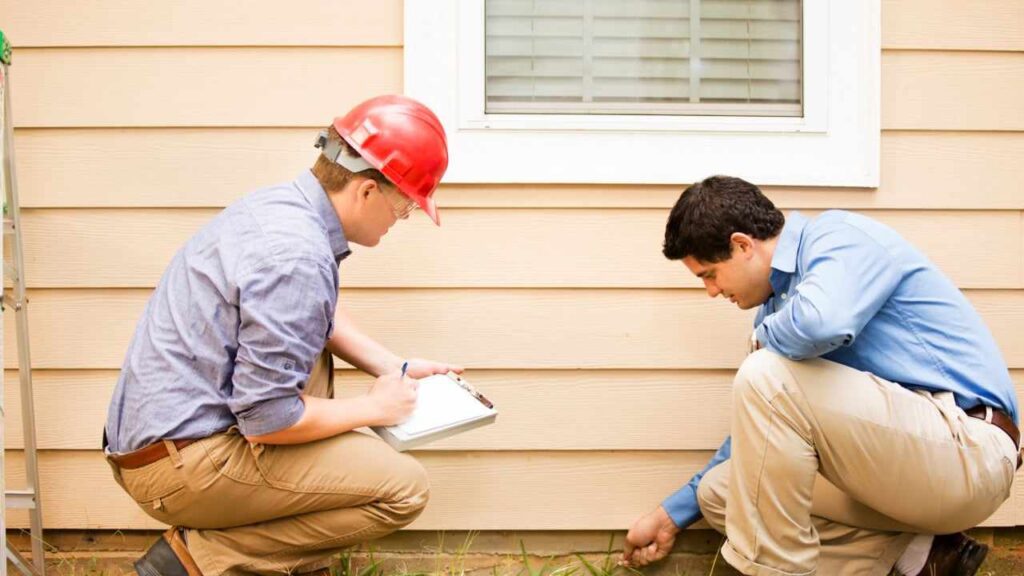When navigating the competitive real estate market in Austin, Texas, a thorough home inspection is a crucial step in ensuring a property’s worth and identifying potential issues. With Austin’s diverse housing landscape, ranging from historic homes to modern builds, evaluating home inspections requires a nuanced approach. Beyond the standard checklist, consider factors like the region’s climate, foundation concerns due to the expansive clay soil, and possible environmental considerations. This guide by Texas Rent 2 Own offers insights into key aspects to scrutinize during a home inspection, empowering prospective buyers in Austin to make informed decisions and negotiate effectively in this dynamic real estate environment.

Foundation Integrity:
Assessing the foundation integrity is paramount when evaluating homes in Austin. The city’s unique topography, characterized by expansive clay soil, poses specific challenges to foundations. Potential issues such as shifting, settling, or even foundation cracks can arise due to the soil’s expansive nature, impacting the structural stability of a property. A comprehensive inspection should include a close examination of the foundation’s condition, looking for signs of distress or uneven settling. Buyers should be particularly attentive to any indications of foundation movement, as addressing such concerns promptly is crucial for maintaining the long-term structural soundness of a home in the dynamic geological context of Austin.
Climate Considerations
When evaluating homes in Austin, climate considerations play a pivotal role in determining a property’s durability and maintenance requirements. Austin experiences a subtropical climate with hot summers and mild winters, making it essential to assess how the home withstands intense heat and potential weather extremes. The scorching temperatures can impact roofing materials and external structures. Additionally, occasional storms and heavy rainfall raise concerns about water damage and drainage systems. Buyers should prioritize homes with robust features that cater to Austin’s climatic nuances, ensuring that the property remains resilient and comfortable throughout the varying weather conditions characteristic of this vibrant Texan city.
Roofing and Attic Inspection:
A meticulous examination of a property’s roofing and attic is crucial when evaluating homes in Austin. Given the city’s diverse climate, which includes intense heat and occasional storms, the roof serves as a primary defense against the elements. Potential buyers should scrutinize the roofing materials for durability, signs of wear, and any necessary repairs. The attic inspection complements this, focusing on ventilation, insulation, and potential water damage. In Austin’s warm climate, a well-maintained roof and attic not only enhance energy efficiency but also ensure the home’s resilience against the challenging weather conditions, making these aspects integral components of a comprehensive home inspection.
Electrical System Evaluation:
Thoroughly evaluating the electrical system is paramount when inspecting homes in Austin. Austin’s real estate landscape, ranging from historic residences to modern builds, demands a comprehensive examination of the property’s wiring and electrical components. Prospective buyers should assess the system’s safety, functionality, and capacity to meet modern energy demands. Given the city’s dynamic growth, ensuring the electrical infrastructure aligns with contemporary standards is crucial. An in-depth inspection helps identify potential hazards, outdated wiring, or overloaded circuits, empowering buyers to make informed decisions about necessary upgrades and ensuring the home’s electrical system is not only reliable but also capable of meeting the demands of modern living in Austin.
Plumbing Integrity:
Assessing the plumbing integrity is a vital aspect of home inspections in Austin. The city’s real estate market, encompassing a diverse range of properties, requires a thorough examination of the plumbing system to ensure its efficiency and resilience. Prospective buyers should scrutinize water supply lines, drainage systems, and fixtures for signs of leaks, corrosion, or potential issues. Given Austin’s occasional heavy rainfall and the expansive clay soil, proper drainage becomes crucial in preventing water-related problems. A comprehensive plumbing inspection not only safeguards against immediate concerns but also ensures the long-term durability of the property, contributing to a seamless and worry-free homeownership experience in the vibrant city of Austin.
HVAC Performance:
Evaluating the HVAC (heating, ventilation, and air conditioning) performance is a pivotal component of home inspections in Austin’s dynamic climate. With scorching summers and mild winters, the functionality of these systems is essential for ensuring year-round comfort. Prospective buyers should assess the efficiency, age, and condition of the HVAC units, considering their capacity to cope with the city’s temperature extremes. Proper functioning not only contributes to a comfortable living environment but also impacts energy efficiency and potential utility costs. A comprehensive evaluation of HVAC systems empowers buyers to make informed decisions, ensuring the home is equipped to handle Austin’s diverse and sometimes challenging weather conditions.
Termite and Pest Inspections:
Conducting thorough termite and pest inspections is imperative in the Austin real estate market, where the warm climate and diverse landscapes create an environment conducive to various pests. Prospective buyers should scrutinize the property for signs of termite damage and the presence of other pests that could compromise structural integrity. The inspection should encompass both the interior and exterior, focusing on areas prone to infestations. Given Austin’s ecological diversity, vigilance against termites and pests ensures the long-term well-being of the property, safeguarding against potential damages and the associated costs of remediation, making it an essential facet of the overall home inspection process in Austin.
Window and Door Seals:
Examining the condition of window and door seals is a critical aspect of home inspections in Austin, where the climate can be both hot and humid. Well-maintained seals are pivotal for energy efficiency, keeping the interior cool during scorching summers and preventing heat loss in milder winters. Prospective buyers should assess the seals for wear, gaps, or signs of deterioration, ensuring they effectively insulate the home. Tight and intact seals not only contribute to climate control but also play a role in noise reduction and protection against potential water intrusion during sporadic rainstorms, making them integral components of a comprehensive home inspection in Austin’s diverse climate.
Mold and Moisture Assessment:
A meticulous mold and moisture assessment is crucial during home inspections in Austin, where the humid subtropical climate can contribute to mold growth and moisture-related issues. Prospective buyers should scrutinize potential problem areas, such as basements, crawl spaces, and bathrooms, for signs of water damage and mold. Austin’s occasional heavy rainfall underscores the importance of evaluating the property’s drainage systems to prevent water intrusion. Detecting and addressing mold and moisture concerns not only ensures a healthier living environment but also protects the structural integrity of the home. A comprehensive assessment empowers buyers to make informed decisions and implement preventive measures against mold in the vibrant Austin real estate market.
Landscaping Impact:
Evaluating the impact of landscaping is a crucial facet of home inspections in Austin, where the climate and soil conditions can significantly influence a property’s stability. The city’s expansive clay soil, coupled with sporadic heavy rainfall, makes proper landscaping essential for preventing potential foundation issues. Prospective buyers should assess the grading, drainage systems, and the placement of trees and shrubs to ensure they complement rather than compromise the home’s structural integrity. A thorough examination of landscaping not only contributes to the property’s aesthetics but also plays a pivotal role in safeguarding against potential challenges posed by Austin’s unique geological and climatic conditions, making it a key consideration in the overall inspection process.
Environmental Concerns:
Addressing environmental concerns is paramount in the home inspection process in Austin, Texas, where diverse landscapes and urban development can introduce various potential hazards. Prospective buyers should be attentive to factors such as radon levels, asbestos presence, and other environmental pollutants. Given Austin’s rapid growth and varying property histories, a thorough inspection ensures the identification of any environmental risks that might impact the health and safety of occupants. By scrutinizing these factors, buyers can make informed decisions about the property’s suitability and implement necessary measures to mitigate environmental risks, contributing to a safer and healthier living environment in Austin’s dynamic real estate market.
Professional Help
Seeking real estate professional help during the home buying process in Austin is essential for navigating the complexities of the real estate market. Engaging a qualified real estate agent provides valuable insights into local neighborhoods, market trends, and negotiation strategies. Additionally, hiring a licensed and experienced home inspector is crucial to uncover potential issues, ensuring transparency about the property’s condition. Legal guidance from a real estate attorney helps navigate contracts and ensures compliance with Texas regulations. Collaborating with these professionals not only streamlines the buying process but also safeguards against pitfalls, making the journey of acquiring a property in Austin more informed, efficient, and ultimately satisfying for prospective homeowners.
Conclusion
In conclusion, a meticulous home inspection is indispensable for prospective buyers navigating the vibrant real estate market in Austin. From assessing foundation integrity influenced by the unique clay soil to considering the impact of the subtropical climate on roofing and HVAC systems, each facet plays a crucial role. Thorough evaluations of plumbing, electrical systems, and potential environmental concerns ensure a comprehensive understanding of a property’s condition. Engaging professionals and scrutinizing landscaping underscore the commitment to a sound investment. By heeding these considerations, buyers empower themselves to make informed decisions in the dynamic Austin real estate landscape, fostering a seamless and confident transition into homeownership.
